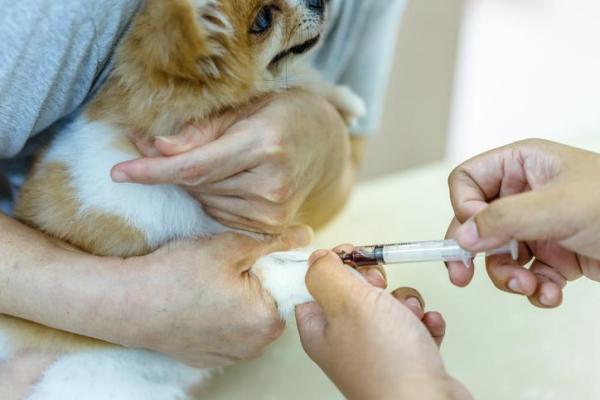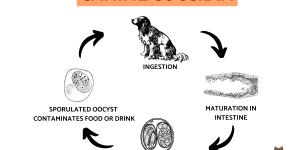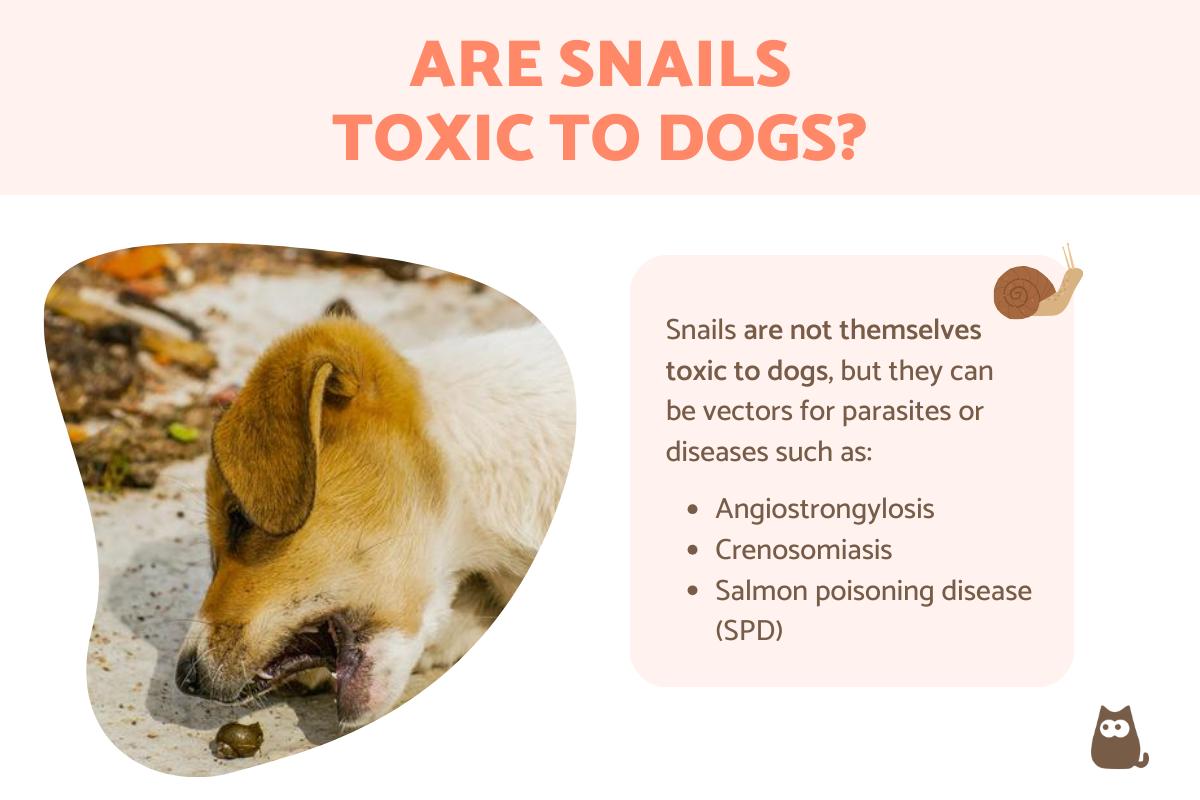What Happens If My Dog Eats a Snail?



See files for Dogs
When a dog ingests a snail, it can be difficult to know the dangers. Since they can be very adventurous when it comes to what they eat, dogs may find irresistible some things we find completely repugnant, including slugs and snails. While snails are a foodstuff eaten in many cultures around the world, they are cultivated especially for this purpose. Snails in the wild are a different matter. Whether your dog has access to a garden or is out walking in a grassy area, there is a greater chance of finding and consuming these mollusks.
AnimalWised looks into the possible health repercussions by answering what happens if your dog eats a snail? In doing so, we can find out if snails are poisonous to dogs and how we can prevent any potential disease.
Is it bad for dogs to eat snails?
The first thing to know is that snails are not poisonous to dogs in themselves. They do not naturally contain any toxic substances, although this does not mean they are always appetizing to dogs. They can provide a choking hazard since their shells can break when they are ingested. However, if the dog has chewed them sufficiently, they are likely to pass the pieces of shell without much issue.
The problem with a dog eating a snail is that these mollusks can spread diseases to dogs. Some parasites are transmitted to our dogs by other animals. The best known are external parasites such as ticks or mosquitoes. These ectoparasites act as a vector of disease by biting the skin to transmit pathogens into the blood stream.
Other parasites are internal parasites, many of which enter the organism through the gastrointestinal system. It is important to know that snails are not in themselves parasites. However, they can contain parasites which enter the dog's organism once ingested. There is not usually any way to discover whether a snail has parasites just by looking at them, not that you will have much opportunity if the dog eats them quickly.
In the case of internal parasites, the parasitization itself creates a disease known as parasitosis. Two different types of nematode (or roundworms) can affect vital organs if passed form snail to dog. They are the Angiostrongylus vasorum, also known as the French heartworm, and the Crenosoma vulpis. They can transit potentially deadly diseases such as filariasis (heartworm) in dogs.
For this reason, snails pose a potential risk for dogs when they eat snails and slugs. If the snail is not hosting a parasite, there should be little concern, but it is not usually possible to tell once they have been ingested.
When infected with these parasites from snails, affected dogs can remain asymptomatic, others can develop respiratory and blood issues. These include coagulopathies which are potentially fatal to the dog. Asymptomatic cases are difficult, especially if the dog eats a snail while we aren't looking. For this reason, it is important to pay general attention to your dog's wellbeing, but also to keep an eye out for more specific symptoms.
It is also possible the snail has come in contact with a toxic substance. In these cases, the snail may travel over or even fall into a toxic substance which is then passed on to the dog once it is eaten.
We look at some of the symptoms and treatment options for these different diseases which can be passed between snails and dogs.
Angiostrongylosis
The parasite Angiostrongylus vasorum can have various adverse effects on a dog's health. These issues include:
- Coagulopathy
- Decrease in platelet levels
- Obstruction of pulmonary arteries
- Thrombosis
- Injuries caused by larvae migration
- Congestive heart failure
- Persistent cough
- Respiratory insufficiency
- Intolerance of exercise
- Anemia
- Hemorrhaging
- Bruising
- Neurological problems
- Weight loss
- Death
The parasite is native to Europe, but it is expanding to other countries and regions. If a dog happens to eat a snail infected with this parasite, the larvae in their L3 stage will travel to the heart[1]. Specifically, it will go to the right ventricle and the pulmonary artery where they will then complete their development into adulthood.
Mature females of this parasite will lay eggs which can travel through the bloodstream, reach pulmonary capillaries and then hatch L1 larvae in the alveoli of the lungs. When the dog coughs or sneezes, the larvae reach the mouth and are swallowed. They go through the digestive system and are then excreted. From then, the larvae can be eaten by snails or slugs, where they develop back into the L3 stage and the cycle can be repeated.
Sometimes, the dog is infested with this parasite by eating other animals which have eaten a slug or snail. These may include frogs, lizards or mice. As we have seen the symptoms of this parasitosis are varied and non-specific, so a veterinarian must provide a diagnosis. Larvae can be observed in the feces, but this can provide a false negative as the larvae may not appear intermittently.
Due to the serious potential consequences of this parasitic disease, it is essential to maintain good deworming routines in order to prevent them. Speak to your veterinarian if you have not already established a deworming schedule. Although there are different types of deworming schedule for dogs, specialists recommend monthly deworming. This is especially for those with access to open areas as snails, ticks, fleas and many other parasite vectors can lurk in these areas.
There are also double deworming options which can be used to treat internal and external parasites in dogs with a single tablet. If we love our animals and want to protect them, deworming is an important factor.

Crenosomiasis
Also known as verminous pneumonia, crenosomiasis is caused by the nematode known as fox lungworm (Crenosoma vulpis)[2]. This affects the dog's lungs and can come from ingested mollusks such as snails.
What happens when a dog eats a snail or slug infested with this parasite larvae is similar to what happens if they ingest Angiostrongylus vasorum. The main difference is that these parasites go to the bronchi and bronchioles in the lungs. In some cases, they can also go to the trachea. The adult females deposit their eggs in these tissues which develop into L1 larvae.
Similar to the previous case, through coughing, sneezing or expectoration, these larvae can end up in the digestive system and stool of dogs. This can then be ingested by the snails and continue their development into L3 larvae. If a dog ingests a snail or contaminated slug, the larvae will pass from the intestine to the lungs through the bloodstream in about three weeks. They will complete their cycle in the lungs and adults can live up to 10 months.
Due to the location of the parasite, the clinical signs are those which affect breathing, manifesting in coughing or intolerance to exercise. As before, many dogs may remain asymptomatic. This disease usually presents in rural areas near cattle as they are the most affected. Although it is not usually a life threatening condition, it is still necessary to prevent it through adequate canine deworming. It should be noted that the disease is not a zoonotic disease of dogs and, therefore, cannot be transmitted to humans.
Bacterial infection
While parasites are the most important concern in dogs eating snails, bacterial infections are also a significant issue. Although dogs have a more robust gastrointestinal system than humans, they are still prone to gastrointestinal infections after eating something containing sufficient amounts of harmful bacteria.
Snails naturally have various bacteria in their mucus[3]. Not all of these are harmful to dogs, but will crawl over almost anything in search of sustenance. This means they can crawl over various surfaces and pick up bacteria in the process. When the dog eats them, they can become infected and suffer from varying symptoms, depending on the nature of the infection.
One particularly concerning bacterial diseases is salmon poisoning disease (SPD) in dogs. This is caused by the bacteria Neorickettsia helminthoeca and can be potentially fatal in canines[4]. This is a bacteria which is released by snails, although it is most commonly derived from salmon which eat sea snails. Although it is much less likely a dog will opportunity to eat a sea snail, this is one reason why it needs to be avoided.

General guidelines for preventing dogs eating snails
Although snails are not toxic to dogs, the potential harm they can cause from parasites and bacteria needs to be avoided. While the probability of your dog getting a parasitical infestation from eating snails depends on various factors, it is still important to know the risks. To minimize these risks, you can follow these guidelines:
- Educate: your animal will need education through obedience training for dogs so that they do not eat anything they find outside the home.
- Observe: if your dog has access to an area with an abundance of snails or slugs, you will need to keep an out for infestations and remove them quickly.
- Vectors: be careful if you live somewhere with a high fox population as these animals can act as reservoirs for parasites such as fox lungworm.
- Hygiene: the mucus traces left by snails as they move along the ground can also be a source of contagion, so wash them away when you spot them.
- Deworming: given the difficulty of spotting the symptoms of roundworm infestation, closely follow your veterinarian's advice on deworming and establish a suitable schedule.
- Symptoms: take your dog to the vet if you spot any symptoms.
- Pest control: use safe snail and slug traps in the garden which will not harm your dog.
One of the most important ways we can protect our dog against diseases is deworming and vaccination. This uses agents to prevent various parasites and diseases from infecting the dog. You will need to speak to your veterinarian about the right vaccination and deworming schedule for your individual dog. You can learn more about this process in the video below:

This article is purely informative. AnimalWised does not have the authority to prescribe any veterinary treatment or create a diagnosis. We invite you to take your pet to the veterinarian if they are suffering from any condition or pain.
If you want to read similar articles to What Happens If My Dog Eats a Snail?, we recommend you visit our Parasitic diseases category.
1. Di Cesare, A., & Traversa, D. (2014). Canine angiostrongylosis: recent advances in diagnosis, prevention, and treatment. Veterinary medicine (Auckland, N.Z.), 5, 181–192.
https://doi.org/10.2147/VMRR.S53641
2. Pohly, A. G., Nijveldt, E. A., Stone, M. S., Walden, H. D. S., Ossiboff, R. J., & Conrado, F. O. (2022). Infection with the fox lungworm (Crenosoma vulpis) in two dogs from New England - Two clinical reports and updated geographic distribution in North America. Veterinary parasitology, regional studies and reports, 30, 100714.
https://doi.org/10.1016/j.vprsr.2022.100714
3. Belouhova, M., Daskalova, E., Yotinov, I., Topalova, Y., Velkova, L., Dolashki, A., & Dolashka, P. (2022). Microbial diversity of garden snail mucus. MicrobiologyOpen, 11(1), e1263.
https://doi.org/10.1002/mbo3.1263
4. Headley, S. A., Scorpio, D. G., Vidotto, O., & Dumler, J. S. (2011). Neorickettsia helminthoeca and salmon poisoning disease: a review. Veterinary journal (London, England: 1997), 187(2), 165–173.
https://doi.org/10.1016/j.tvjl.2009.11.019







